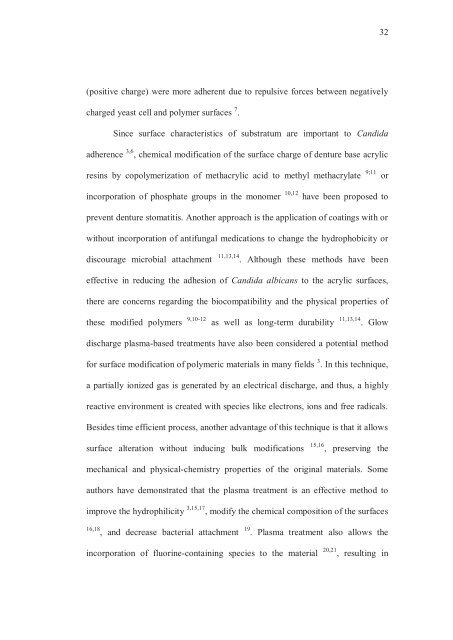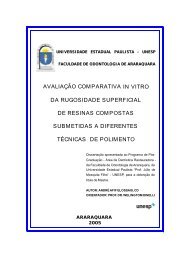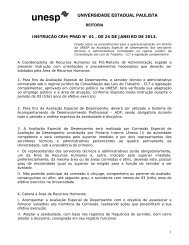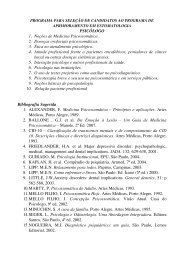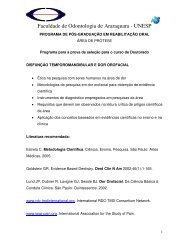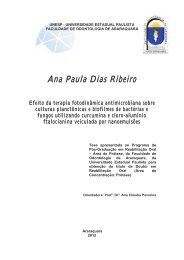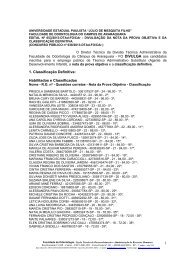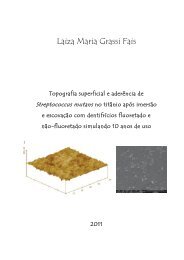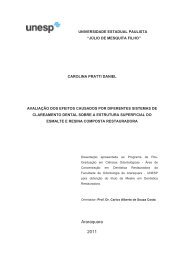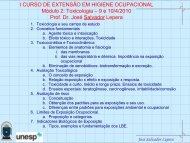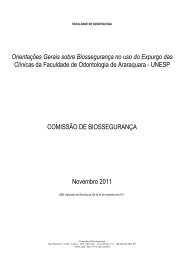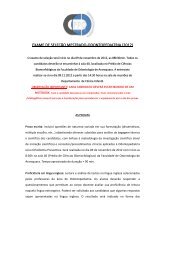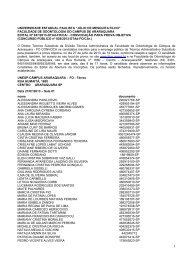universidade de são paulo - Faculdade de Odontologia - Unesp
universidade de são paulo - Faculdade de Odontologia - Unesp
universidade de são paulo - Faculdade de Odontologia - Unesp
Create successful ePaper yourself
Turn your PDF publications into a flip-book with our unique Google optimized e-Paper software.
32<br />
(positive charge) were more adherent due to repulsive forces between negatively<br />
charged yeast cell and polymer surfaces 7 .<br />
Since surface characteristics of substratum are important to Candida<br />
adherence 3,6 , chemical modification of the surface charge of <strong>de</strong>nture base acrylic<br />
resins by copolymerization of methacrylic acid to methyl methacrylate 9;11 or<br />
incorporation of phosphate groups in the monomer 10,12 have been proposed to<br />
prevent <strong>de</strong>nture stomatitis. Another approach is the application of coatings with or<br />
without incorporation of antifungal medications to change the hydrophobicity or<br />
discourage microbial attachment 11,13,14 . Although these methods have been<br />
effective in reducing the adhesion of Candida albicans to the acrylic surfaces,<br />
there are concerns regarding the biocompatibility and the physical properties of<br />
these modified polymers 9,10-12<br />
as well as long-term durability 11,13,14 . Glow<br />
discharge plasma-based treatments have also been consi<strong>de</strong>red a potential method<br />
for surface modification of polymeric materials in many fields 3 . In this technique,<br />
a partially ionized gas is generated by an electrical discharge, and thus, a highly<br />
reactive environment is created with species like electrons, ions and free radicals.<br />
Besi<strong>de</strong>s time efficient process, another advantage of this technique is that it allows<br />
surface alteration without inducing bulk modifications 15,16 , preserving the<br />
mechanical and physical-chemistry properties of the original materials. Some<br />
authors have <strong>de</strong>monstrated that the plasma treatment is an effective method to<br />
improve the hydrophilicity 3,15,17 , modify the chemical composition of the surfaces<br />
16,18 , and <strong>de</strong>crease bacterial attachment 19 . Plasma treatment also allows the<br />
incorporation of fluorine-containing species to the material 20,21 , resulting in


